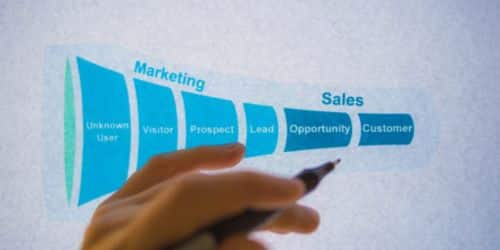Building lasting relationships with customers and increasing revenue both require a robust sales pipeline. Hence, to achieve their goals, sales representatives must balance numerous competing demands. It’s very rare for a salesperson with little experience to get stressed out, lose sight of the bigger picture, and focus all of their energy on closing. However, you can empower your team by equipping them with the necessary resources and creating a very strong sales pipeline. Also, using a sales pipeline, you can keep track of leads, keep an eye on fresh opportunities, and tend to current client connections. Read on to learn about the stage of a sales pipeline, its software, its management, and the difference between a sales pipeline and a sales funnel( Sales pipeline vs sales funnel).
What Is a Sales Pipeline?
A sales pipeline is a chart or graph that shows the various stages that sales lead go through before making a purchase. As a collective, sales teams may see how close they are to meeting their quota. Additionally, each salesperson can determine how close they are to meet their quotas using the data provided by the pipelines. As a result, sales representatives and executives are better able to predict how many transactions they will execute and how much money they will bring in over a certain timeframe.
In addition, a sales pipeline can be either horizontal or vertical. The steps of the sales pipeline may look different depending on the industry, but getting sales leads is always the same. Lead qualification, lead nurturing, and deal closure are all stages in the sales process. Converting prospects into legitimate clients is the true aim.
Sales Pipeline Stage
Each company has its own unique sales process, and that process can be reflected in the various stages of the sales pipeline. If your company’s sales cycle isn’t typical, it could be helpful to divide the pipeline into different stages. Nonetheless, most sales representatives use the following sales pipeline stages to structure their pipelines.
#1. Prospecting
To better understand the sales pipeline, think of prospecting as the first step. Prospects aren’t yet ready to talk to a salesperson, so they’re in the “prospecting” stage. They have reached this point because they have been considered a possible customer by either the marketing department or the sales department. They may receive an email or a LinkedIn invitation from the salesman. After a conversation between a prospect and a salesperson, the lead advances to the next phase of the sales process.
#2. Proficient Leadership
Both the lead and the salesperson will be evaluating the stage so far. Most sales leads are qualified based on their proximity, financial resources, decision-making power, and suitability. It is of paramount importance to the salesperson to determine if their prospect meets these qualifications.
Also, if the salesperson has prior knowledge of the lead, for instance through a genuine touch or by checking their qualifications on a social media site like LinkedIn, then they can skip this step.
#3. Demo or Meeting
Next, arrange a meeting or presentation to introduce your clients to your services and products. It is time to decide whether there is a viable business basis for the prospect to get a proposal.
#4. Proposal
Provide a summary of how your business may meet the needs of your prospective client. Show that the value you’ll provide at the rates you suggest will more than cover the investment you’re asking for. At this point, it’s important to highlight what makes your offer special so that the client can easily see that you’re the best choice among the other vendors they’ll meet. Talking about how to add or take away work, change costs, and coordinate activities can lead to a partnership that works well for both parties.
#5. Negotiation and Commitment
To come to terms with a collaboration that is beneficial to both parties. It is important to discuss extending or decreasing the work scope, altering costs, and accountability processes.
#6. Opportunity Won
Here, the duty of the salesman is essentially done after the contract is signed. The “close rate” is the proportion of qualified leads that became opportunities won by a sales representative.
#7. Post-purchase
While doing business, the sale is considered finalized after the initial contract is signed. Rather, your team should focus on offering high-quality assistance during the induction program and maintaining close account supervision. Time your cross-selling and upselling of existing consumers so that you can maximize your profits. When the contract’s term is nearing its end, you can initiate renewal discussions. Also, get recommendations from your most satisfied clients.
#8. Qualification
A company’s sales staff is responsible for prospect qualification. They also look at the company’s leads to see if the prospect is a better fit for the company’s products or services. A salesperson might do this by asking about the client’s industry, the nature of the problem they’re trying to solve, and the extent of their financial resources. A salesman will also typically ask a prospective client several inquiries. The communication could take place via the internet, the phone, a video call, or even face-to-face.
Sales Pipeline Software
Software for managing and analyzing leads and prospects during the sales process is known as “sales pipeline” software. It’s useful for keeping tabs on prospective clients and monitoring their progress through the sales pipeline. Here is a list of the sales pipeline software:
#1. Zoho CRM
Most companies have embraced Zoho CRM as their go-to sales pipeline software. As compared to other companies that provide sales pipeline management software, this one stands out due to its extensive core functionality.
#2. CRM Software by HubSpot
HubSpot is well-known in the field of online advertising, and for good reason. One of the top customer relationship management programs available is provided by them. It comes with a robust interface that will provide you with up-to-the-minute sales data.
#3. Copper
It’s another widely used customer relationship management system. Copper has numerous built-in connectors for G Suite users’ most frequently used features, like contact information, emails, and documents.
Hence, with Copper, you can track potential customers as they move through the various stages of the sales process. Your sales team will be able to maximize their efficiency thanks to the many time-saving automation capabilities it provides. Copper is another piece of sales pipeline software worthy of consideration, thanks to its robust analytics tool and effective sales.
#4. Bitrix24
If you want to maximize your marketing budget, Bitrix24 is a great tool to use. It offers you a bird’s-eye view of your campaigns as a whole, as well as detailed insights into individual KPIs. Bitrix24 makes it simple to identify profitable and unprofitable endeavors and reallocate sales and profit.
#5. Close CRM
As a business tool, Close CRM is invaluable for monitoring key performance indicators. On a panel that you can change, the most important business and advertising KPIs are shown in a clear and concise way. It’s also easy to keep employees on track because the interface can be changed and everyone on your team has access to it.
Sales Pipeline Management
The management of the sales pipeline involves the systematic recording and monitoring of leads, targets, and quotas. Knowing which deals call for further scrutiny is also part of the job. When salespeople have a good handle on their pipelines, they can easily maintain track of deals, no matter how many stages they may have progressed through.
Sales Pipeline Management Practices
They include:
#1. Keep Tabs on Key Sales Data
Knowing the metrics and parts of the sales pipeline is crucial for success. Also, knowing the norms helps sales managers plan for the future and generate consistent income.
#2. Don’t Forget to Follow Up!
Customers have more options nowadays than ever before. In other words, they need more convincing to purchase your service or goods.
#3. Focus on the Promising Leads
Examining your sales procedure thoroughly, you may find that it takes approximately the same amount of time to conclude each contract. Don’t waste time on things that won’t move the needle for you and your company; instead, focus on the highest-quality, highest-value leads you can find.
#4. Enforce Frequent Pipeline Reviews
The majority of sales managers hold weekly forecast meetings. Pipeline assessments are necessary because, as with most things in sales, forecast sessions only consider prospects that are likely to close during the subsequent week. Sales pipeline management is a great way to weed out low-quality leads at the start and middle of the sales process.
#5. Concentrate on Progressive Improvements Throughout the Sales Process
When sales teams use a reliable revenue model, they have a lot of chances to make money. As a result, salespeople may start putting less emphasis on high-quality leads. Your sales funnel could suffer from a lack of attention to quality leads. Even small efforts to improve pipeline management at each step of the funnel lead to positive results.
Why Is Sales Pipeline Management Important?
Using your sales pipeline management, you can pinpoint where your economic growth is most and least robust. This pinpointing allows you to assess the measures that are suitable for the specific phase of the cycle that is lacking or requires intensive work to improve.
Sales Pipeline vs Sales Funnel
The differences between a sales pipeline and a sales funnel( sales pipeline vs sales funnel) include the following:
- Firstly, the efficiency of a company’s sales process can be gauged with the help of a sales pipeline. Whereas, a sales funnel can be used by the marketing department to track the many avenues via which potential customers learn about the company. This data is useful for marketing departments since it reveals whether or not their spending is efficient, whether or not they can save costs, and whether or not their efforts are yielding positive results( Sales pipeline vs Sales funnel).
- Secondly, the sales pipeline is the path a potential client must take before becoming a paying client. However, the sales funnel shows how many potential customers have progressed through each level of the sales process( Sales pipeline vs Sales funnel).
- The sales department is thoroughly examined within a sales funnel, from lead generation to the ultimate purchase decision. Also, brand-centricity is important because it takes into account the internal procedures required in converting a lead into a paying customer and retaining them. However, a sales funnel takes into account a customer’s entire experience, from initial brand exposure to the final purchasing decision. It takes into account the buyer’s journey as a whole to better serve the customer at each stage( Sales pipeline vs Sales funnel).
Even though they are different, the goal of both is the same: to make the last steps of a transaction between a seller and a buyer easier. The importance of sales funnel management and pipeline management cannot be overstated. When they are used and understood correctly, they can help a company’s finances reach new heights.
What Is the 7 Step Sales Process?
Prospecting, preparation, approach, presentation, resolving objections, closure, and follow-up are the seven main processes in the sale process.
What Are the 4 Pillars of the Sales Process?
The four pillars of the sales process include:
- Integrity
- Honesty
- Knowledge
- Genuine Interest
What Are the 4 Key Sales Steps?
The four essential steps of the sales process are research, prospecting, the sales call and close, and relationship-building. The number of steps in the sales process may vary depending on the sector, item, and sales expert’s ability; nonetheless, these four stages remain consistent.
In a Nut Shell
And with that, we’re done! We hope that this article will help you understand the basics of the sales pipeline and the steps you need to take to set up a sales pipeline for your company’s sales.
Reference
- zendesk.com
- techtarget.com
- sellingsignals.com
- leadlander.com






